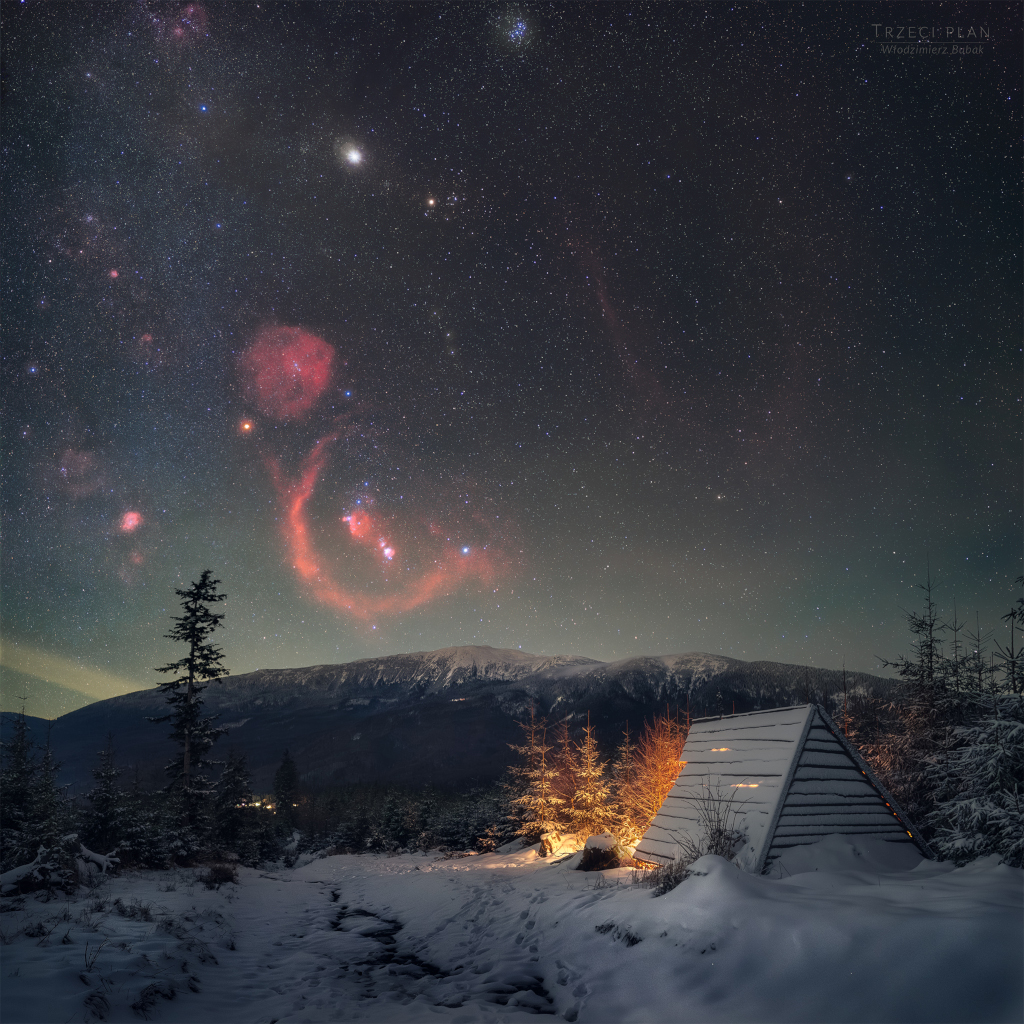Nombre total de pages vues
30/12/2024
ASTRONOMIE - J 1214 b - une superterre inhabitée
ASTRONOMY - M27: The Dumbbell Nebula
2024 December 30
Image Credit & Copyright: Christopher Stobie
Explanation: Is this what will become of our Sun? Quite possibly. The first hint of our Sun's future was discovered inadvertently in 1764. At that time, Charles Messier was compiling a list of diffuse objects not to be confused with comets. The 27th object on Messier's list, now known as M27 or the Dumbbell Nebula, is a planetary nebula, one of the brightest planetary nebulas on the sky and visible with binoculars toward the constellation of the Fox (Vulpecula). It takes light about 1000 years to reach us from M27, featured here in colors emitted by sulfur (red), hydrogen (green) and oxygen (blue). We now know that in about 6 billion years, our Sun will shed its outer gases into a planetary nebula like M27, while its remaining center will become an X-ray hot white dwarf star. Understanding the physics and significance of M27 was well beyond 18th century science, though. Even today, many things remain mysterious about planetary nebulas, including how their intricate shapes are created.
29/12/2024
ASTRONOMY - Methane Bubbles Frozen in Lake Baikal
2024 December 29
Image Credit & Copyright: Kristina Makeeva
Explanation: What are these bubbles frozen into Lake Baikal? Methane. Lake Baikal, a UNESCO World Heritage Site in Russia, is the world's largest (by volume), oldest, and deepest lake, containing over 20% of the world's fresh water. The lake is also a vast storehouse of methane, a greenhouse gas that, if released, could potentially increase the amount of infrared light absorbed by Earth's atmosphere, and so increase the average temperature of the entire planet. Fortunately, the amount of methane currently bubbling out is not climatologically important. It is not clear what would happen, though, were temperatures to significantly increase in the region, or if the water level in Lake Baikal were to drop. Pictured, bubbles of rising methane froze during winter into the exceptionally clear ice covering the lake.
28/12/2024
ASTRONOMIE - GJ 1214 b : une superterre inhabitée
ASTRONOMY - A December Winter Night
2024 December 28
Image Credit & Copyright: Włodzimierz Bubak
Explanation: Orion seems to come up sideways, climbing over a distant mountain range in this deep skyscape. The wintry scene was captured from southern Poland on the northern hemisphere's long solstice night. Otherwise unseen nebulae hang in the sky, revealed by the camera modified to record red hydrogen-alpha light. The nebulae lie near the edge of the Orion molecular cloud and join the Hunter's familiar belt stars and bright giants Betelgeuse and Rigel. Eye of Taurus the Bull, yellowish Aldebaran anchors the V-shaped Hyades star cluster near top center. Still, near opposition in planet Earth's sky, the Solar System's ruling gas giant Jupiter is the brightest celestial beacon above this horizon's snowy peaks.
27/12/2024
ASTRONOMIE - Les plus beaux astres de la Voie Lactée - Vénus - l’étoile du Berger
ASTRONOMY - Planet Earth at Twilight
2024 December 27
Image Credit: ISS Expedition 2 Crew, Gateway to Astronaut Photography of Earth, NASA
Explanation: No sudden, sharp boundary marks the passage of day into night in this gorgeous view of ocean and clouds over our fair planet Earth. Instead, the shadow line or terminator is diffuse and shows the gradual transition to darkness we experience as twilight. With the Sun illuminating the scene from the right, the cloud tops reflect gently reddened sunlight filtered through the dusty troposphere, the lowest layer of the planet's nurturing atmosphere. A clear high altitude layer, visible along the dayside's upper edge, scatters blue sunlight and fades into the blackness of space. This picture was taken from the International Space Station orbiting at an altitude of 211 nautical miles. Of course from home, you can check out the Earth Now.
26/12/2024
ASTRONOMIE - Les plus beaux astres de la Voie Lactée - L’imposant maître Soleil
ASTRONOMY - Grand Spiral NGC 5643
Image Credit: ESA / Hubble & NASA
Explanation: Viewed face-on, grand spiral galaxy NGC 5643 has a festive appearance in this colorful cosmic portrait. Some 55 million light-years distant, the galaxy extends for over 100,000 light-years, seen within the boundaries of the southern constellation Lupus. Its inner 40,000 light-years are shown in sharp detail in this composite of Hubble Space Telescope image data. The galaxy's magnificent spiral arms wind from a yellowish central region dominated by light from old stars, while the spiral arms themselves are traced by dust lanes, young blue stars and reddish star forming regions. The bright compact core of NGC 5643 is also known as a strong emitter of radio waves and X-rays. In fact, NGC 5643 is one of the closest examples of the Seyfert class of active galaxies, where vast amounts of dust and gas are thought to be falling into a central massive black hole.
ASTRONOMY - IRAS 04302: Butterfly Disk Planet Formation
2025 September 8 IRAS 04302: Butterfly Disk Planet Formation Image Credit: NASA , ESA , CSA , Webb ; Processing: M. Villenave et al....

-
2022 September 26 All the Water on Planet Earth Illustration Credit: Jack Cook, Adam Nieman, Woods Hole Oceanographic Institution ; Data ...
-
2021 August 11 Mammatus Clouds over Saskatchewan Image Credit & Copyright: Michael F Johnston Explanation: When do cloud bottoms appe...








